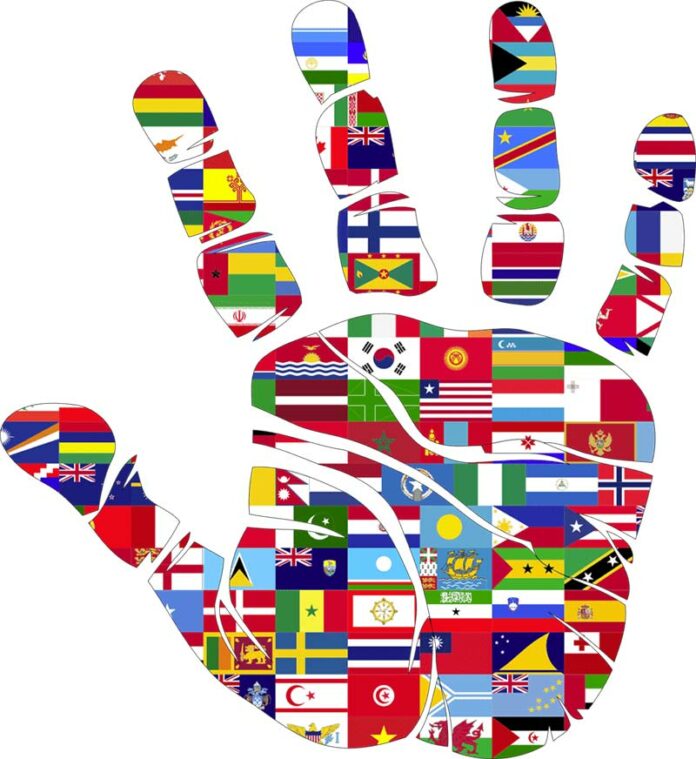By Isabella De Paolis
During the second semester just ended, at the Department of Humanities Studies of Roma Tre University, the workshop entitled “Religions in the global world” was held, the result of collaboration between the Master’s Degree courses “Movements and trends of contemporary Islam” (Prof. G. Gervasio); “History of religions” and “Religions and urban spaces” (Prof.ssa M.C. Giorda). In addition to the seminars of the two teachers involved, the workshop was attended by external experts – scholars, researchers, local and international civil society representatives, and personalities of Italian and international religious communities – who dealt with current issues and urged students to a critical and participatory confrontation. In full line with the didactic specificity of the university laboratory, that is to insert itself in the within of the curricular proposal through a more direct modality, a more restricted setting and a more active participation, the laboratory “Religions in the Global World” on May 12th left he classrooms of Via Ostiense 234 and moved to one of the most super-plural districts of Rome, Tor Pignattara, to discover some symbolic places of different religious communities. Located in the southeast quadrant of the capital with an area of just over 200 hectares that hosts about 22% of foreigners out of a total of about 50 thousand residents, Tor Pignattara is a place that escapes a clear and unambiguous definition. It is a suburb, but it is located a few kilometers from the historic center; it is a buffer zone characterized by a unique otherness compared to the Pigneto, which in recent decades has experienced an alternative and somewhat naïve gentrification, and the area around Largo Preneste, made of curtain buildings of the middle class, shops and supermarkets and, although close to the dormitory district of Casilino 23, Tor Pignattara is a lively and varied neighborhood, sometimes difficult, where there are small shops of all kinds (artisans, service supplies and bazaars) and with affordable rental apartments that have called immigrants mostly from Southeast Asia. It is the district that yesterday experienced, within the school walls and in the streets, media and political battles and that, today, promotes the Taste de World, the Karawan film festival and the activities of the Casilino Ecomuseum. In short, it is
the neighborhood of oxymorons: the false truths of television services, the lucid madness of the coexistence of several religious faiths, the bitter sweetness of the looks of Italian migrants, the dull noise of the train that crosses it and divides it in two. These premises made it possible to choose the neighborhood of Tor Pignattara as a place of religious pluralism and multiculturalism for a lesson on the go of the laboratory “Religions in the global world”.
As well known, laboratory teaching aims to decline the skills of “savoir-faire” and “savoir-être” through the contextualization of disciplinary and interdisciplinary contents, through the activation of the students’ soft skills. It is a matter, at the operational level, of building real workshops that can give life to an integrated learning mode that is concretized as the place of the triangulation theory-practice theory, where the metacognitive model of competences is valued, which, in turn, refers to a process of critical self-assessment.
In this perspective, the day spent in the streets of Tor Pignattara represented a moment of reflection and dialogue between students, teachers, and experts around key points of some places of worship visited.
The super-diversity of the streets of Tor Pignattara, among the bright colours of the clothes laid on the strings of the balconies that lead us to India, Bangladesh and Pakistan and the smells of spices and exotic fruits from small shops on the street opens, on tiptoe, to the various religions.
The first stage is Casa Scalabrini that welcomes families and young refugees and promotes activities and training courses aimed at asylum seekers, refugees, migrants, and the local community. Linked to the program of the Scalabrinian Agency for Development Cooperation (ASCS Onlus) Casa Scalabrini is supported by the Congregation of the Missionaries of San Carlo, which for 130 years has been at the service of migrants and refugees in 32 countries around the world and welcomes both Catholics and Muslims, working, from the outset and without linguistic mediators, on individual autonomy that can encourage integration in the surrounding context.
The definitely summer temperatures of an anomalous spring day do not stop the curiosity of more than 40 students attending, who listen to the explanations provided by the “hosts”, visit the common areas of the house, from the canteen to the various corners of the garden that surrounds it, from the tailor’s shop to the radio station.
Continuing on Via Casilina, the long line of students and teachers, which suggests an orderly line of pilgrims or students, reaches the Mausoleum of Saint Helena, erected by Constantine in the fourth century after Christ. Built close to the Basilica in honor of the martyrs Marcellinus and Peter, the mausoleum began the monumental christianization of the suburb and, today, is the symbol of the district of Tor Pignattara to which it gives its name (the amphorae that decorate the Mausoleum were called, in jargon, “pignatte”). The detailed information, both from a historical religious and archaeological point of view, of the anthropologist Carmelo Russo, guide of the itinerary, provides a few points of reflection and possible insights to the students of the laboratory that, along the walks, comment on the places visited and look, with interested eyes, the surrounding space.
Walking next to the Alexandrian Aqueduct, near the Giordano Sangalli Park, you will reach the Madonna della Capannuccia, symbol of popular Christian belief, built on the place where, it is
said, group of children on May 17th 1948, saw a dazzling light while one of them recognized the features of the Virgin. Today it is a small chapel where the faithful go to pray; inside the walls are covered with dozens of plates “by grace received”, dating back largely to the 40s. Inside the chapel there are holy cards, statuettes, flowers, postcards of popes, a small table dedicated to Padre Pio, in an atmosphere that brings back to an archaic faith. The entrance to the chapel, contingent for reasons of space, gave rise to the spontaneous formation of various groups of students involved in pleasant conversations on the route, highlighting a relaxed atmosphere and empathetic emotional involvement.
A little further on the group reaches the Muslim Center in Via Carlo Della Rocca 23, once a supermarket, and today, the main place of prayer for the Muslim community of the neighborhood, mostly Bengali nationalities; the temple ‘Om Hindu Mandir in Via Amedeo Cancelli 23A and, then, the Bahá’í Educational Centre, located in Via Bernardo Buontalenti 29, which started its activity a couple of years ago. What unites the three places of worship is the absolute anonymity with which they overlook the surrounding environment. In all three cases the entrance, on the road, is that of a showcase of any shop, known to the only interested and perhaps to some curious. Despite this, the activity of the three offices turns out to be very fervent and active.
The imam of the Muslim center and his collaborators welcome students and teachers with warmth and affection. Enjoying great dates and home-made cookies kindly offered by Muslims, students are, first, captivated by the explanations of the typical day in the mosque and the cultural activities proposed in collaboration with the Ecomuseum Casilino and other organizations active in the neighborhood and then engaged in a task of digital dissemination assigned by the teachers. The relaxed and, at the same time, effervescent atmosphere of students taking photographs, asking for translations of signs and manuscripts posted on the wall, trying to repeat the correct pronunciation of terms already known from previous studies but altered by the Latin phonology, confirm the success of the workshop output.
Finally, the Bahá’í Educational Centre welcomes students and teachers from Roma Tre in its spacious air-conditioned rooms, exhausted by the torrid heat, and immerses them in a religious dimension unknown to most of the participants. From the maxim “All men have been created to advance a civilization in continuous progress” of Bahá’u’lláh, the founder of the Bahá’í faith, who stands on a whiteboard in the center of the room, the leader of the Via Buontalenti community illustrates the focal points of the Bahá’í vision of a better world that draws on teachings such as the unity of mankind, equality between women and men, the elimination of prejudices, the harmony between science and religion. The encounter with a little known religious faith generates curiosity and questions among students and,luckily, clear and comprehensive answers from the hosts.
Undoubtedly, all the places of worship visited seem to be united by the same mission, namely the promotion of the culture of encounter, welcome and integration between the faithful and the local community through encounters, dialogue, formal and informal relations, shared holidays, and socio-political appointments.
In addition to the general impression given during the day, through careful and participatory observation, more reliable data were collected through a structured questionnaire on the day of May 12th and through interviews with some students. The student-type who has participated in the laboratory “Religions in the globalized world” is in progress, attending, is working on his thesis and believes that the educational output has had a significant weight in their study path, for various research points identified. It is interesting to note that more than half of the
students attended the workshop and participated in the educational output for their own personal interest, beyond what was provided for in their study plan. Everyone liked the idea of the didactic exit, more than half of the students defined it, with regard to the proposals offered and the organization of the day, a decidedly positive experience. Although there have been episodes, mostly spontaneous, of aggregation, especially during the educational exit, more than half of the students propose to enhance the socialization within the laboratory. An invitation to teachers, therefore, to plan group activities aimed at implementing cooperative learning and facilitating dynamics of mutual collaboration. From a more didactic point of view, about 70% of students believe that the realization of the triangulation theory-practice-theory is very positive.
As for the day of the exit to Torpignattara, it is important to mention the moment of conviviality shared during the lunch break. The proposal of the organizers of the workshop, namely a vegetarian lunch at the Bazar Taverna Curda Meticcia Casilina 607 street based on borek, hummus, falafel and biryani welcomed a very high consensus of participants. The internal and external premises of the tavern, in a few minutes, were crowded with students who in an informal, socializing and fun context (are some of the recurring adjectives in the answers to the questionnaire) and under the scorching heat of an early summer, almost forgot to be at a university laboratory in Rome.
Home Religions and school ITALY (ROME). The ‘Religions in the global world’ lab (Roma Tre University)...





